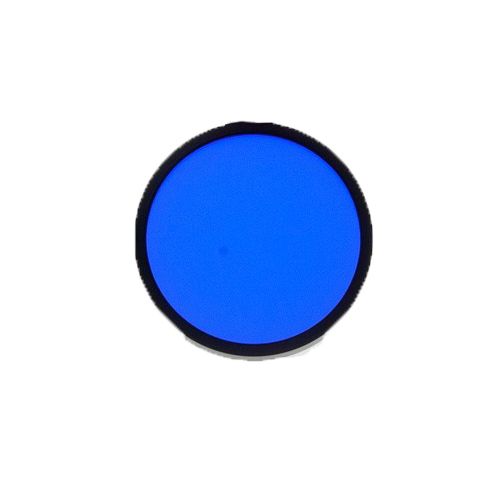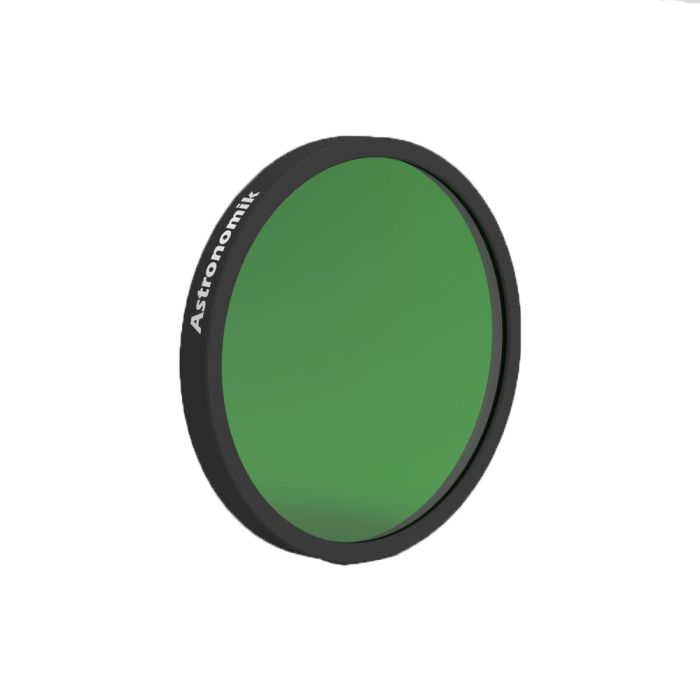
LRGB filters are essential for astrophotography, allowing astronomers to capture full-color images by separating light into red, green, and blue channels. These filters enhance detail and contrast, facilitating the creation of vibrant images of celestial objects. Understanding filter bandpass will help make informed choices about selecting the correct filter for your equipment and setup needs.
Highlighted Products
Featured Product 1
The Astronomik Blue Type 2c Filter (31 mm Round) enhances the clarity of blue wavelengths in astrophotography, making it ideal for imaging celestial objects such as stars and nebulae. This filter effectively reduces unwanted light pollution, allowing for better contrast and detail in captured images, enriching the overall observational experience.
Featured Product 2
The Astronomik 36 mm Deep-Sky Green Filter (DG-36) enhances visibility of green wavelengths, significantly improving the contrast of celestial objects like nebulae and galaxies. This filter is ideal for astrophotography and visual observations, effectively reducing light pollution and allowing astronomers to capture finer details and richer colors in their images.
Featured Product 3
The Astronomik Deep Sky RGB Color Filter Set (2" Round Mounted) is essential for astrophotographers aiming to enhance their deep-sky imaging. This set features high-quality filters that provide optimal color balance, improving light transmission in red, green, and blue wavelengths, ensuring vibrant, detailed, and accurate representations of celestial objects.
More About This Category
The acronym "LRGB" provides a glimpse into the purpose and function of these filters. LRGB stands for Luminance, Red, Green, and Blue, which are the primary color channels used in astronomical imaging. Unlike traditional RGB filters, LRGB filters introduce an additional luminance filter, enhancing the overall image quality by focusing on brightness and detail. Including a luminance channel enables astronomers to capture fine details in the structure of galaxies, nebulae, and other deep-sky objects, providing a more comprehensive view of the cosmos.
One reliable source for astronomy supplies, High Point Scientific, has stocks of these Astronomik LRGB filters, proving our dedication to providing top-notch telescopes and accessories. We sell them in bundles and separate pieces. High Point wants to ensure we have all the sizes and different features of the Astronomik LRGB filters: round, square, mounted, and unmounted.
LRGB filters are used for more than just taking vibrant pictures of the stars. Every filter has a distinct function during the imaging process, helping to produce a final composite image that accurately depicts the object of study in space. Let's explore each filter’s uniqueness.

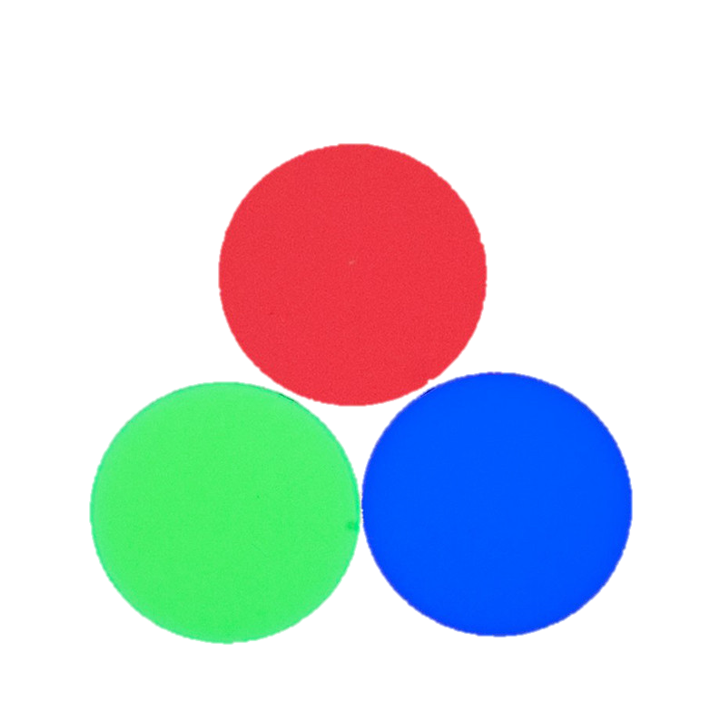
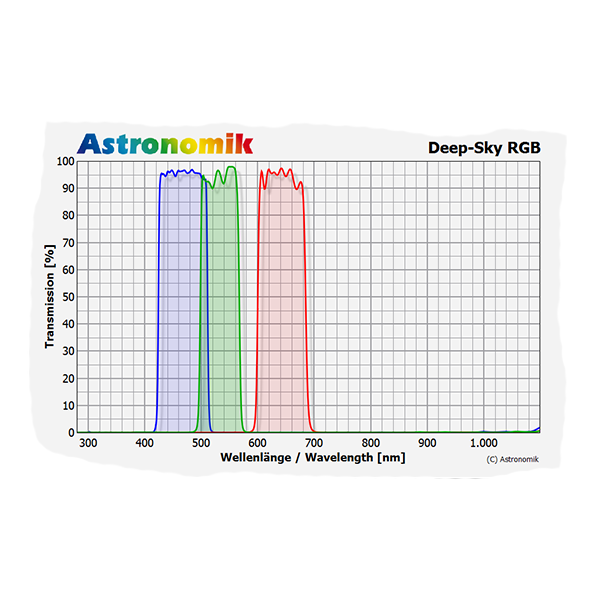
The luminance filter, which is frequently represented by the letter "L," such as the white/transparent filter present in the Astronomik LRGB Filter Set - 31 mm Round or the Astronomik LRGB Filter Set - 2" Round Mounted aims to capture an object's brightness and features without adding color information. The image's basis is this grayscale channel, which prepares the viewer for the addition of color later on.
The Red, Green, and Blue filters, denoted by the respective letters "R," "G," and "B," target specific wavelengths of light associated with each color. By systematically capturing these color channels, astronomers can combine them to produce a full-color image that mirrors the natural hues of the observed celestial object. Using individual color filters allows for a more nuanced and accurate representation of the object's true colors, adding a layer of authenticity to the final image.

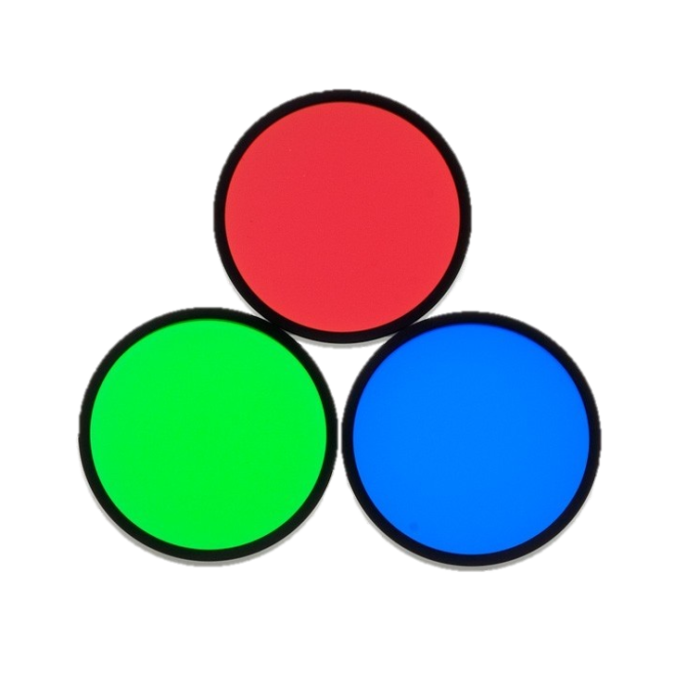
To maximize the potential of these filters, here are some step-by-step instructions for optimal usage.
- Select the appropriate filter set based on the target object and prevailing observing conditions.
- Mount securely into the filter wheel of your telescope's imaging system, ensuring a precise fit to prevent light leakage.
- Set up your telescope and camera system for imaging, ensuring proper focus and alignment.
- Begin your imaging session by capturing Luminance data using the L filter to record brightness and detail.
- Adjust exposure times accordingly to achieve a well-exposed image without saturation. Once the Luminance data is acquired, switch to the Red, Green, and Blue filters sequentially to capture color information.
- Adjust exposure times for each filter to maintain a balanced color palette, avoiding overexposure or underexposure. Take multiple exposures for each color channel to enhance the signal-to-noise ratio.
Image processing comes next after image gathering. Using various filters, astronomers use specialized software to align, stack, and calibrate the acquired pictures. The finished image is sharper and of higher overall quality after this treatment. The Luminance channel provides the intricate structure, while the RGB channels contribute to the color when the LRGB combination is applied during the processing step.
Because of their precise coatings and excellent optical quality, the Astronomik LRGB filters are essential for minimizing distortions and guaranteeing correct color reproduction in the final image. The remarkable capabilities of these filters are especially noticeable in the way they reduce artifacts and preserve minute details, which helps to produce breathtaking astrophotography.
Astronomik LRGB filters are flexible tools for astronomers with various equipment settings since they work with a broad range of telescopes and cameras, which is one of their main advantages. These filters function exceptionally well when used with refractors, reflectors, or catadioptric telescopes, giving astrophotographers consistent and dependable results. These are also sensible for astronomy enthusiasts due to their lifetime reliability. These filters are made to endure the demands of astrophotography using premium materials and precise production processes, guaranteeing a long and dependable service life.
